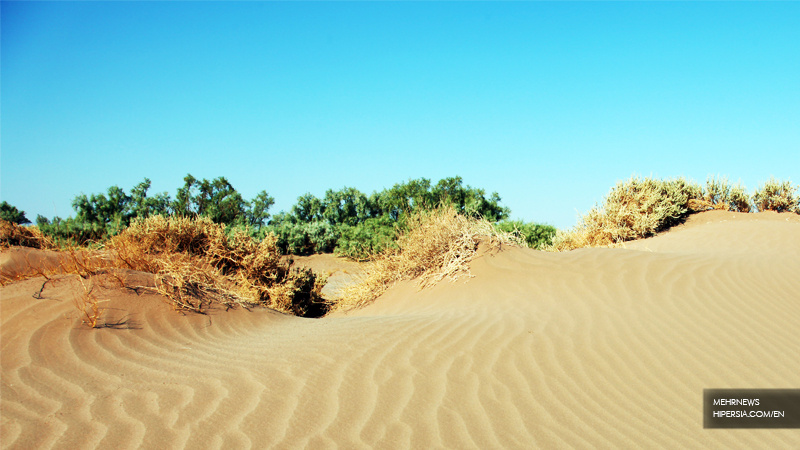



In the desert lands, everything is created from wind and soil erosion and salt water. From soaring Kalut of Shahdad Desert to soaring sand dunes of Rigan. But, Nabkha symbolize the synergy of the plants and arid region of Lut Desert was named as the warmest point in the earth.
You can find a number of names in the literature for this type of dune, including Nabkha, Nebkha, coppice dune, shrub-coppice, hummock, rebdou, and photogenic mound. One of the spectacular phenomena of Lut Desert, is the world largest species of Nabkha in the western edge of the Lut desert. Sometimes they reach 10 meters in length, While the height of the tallest Nabkha in the desert of Africa are hardly reaching 3 meters.
The creation of Nabaka is closely linked to the type of plant, wind direction and the amount of sand source.
In the desert lands, everything is created from wind and soil erosion and salt water. From soaring Kalut of Shahdad Desert to soaring sand dunes of Rigan. But, Nabkha symbolize the synergy of the plants and arid region of Lut Desert was named as the warmest point in the earth.

Lut Desert and Sahara (Desert in Africa) are the only places in the world that Nabkha are observed. Nabkha are generally found on flat surfaces with moderate sand levels and high groundwater levels or enough moisture to grow plants.
These natural phenomena are a result of the interaction of wind erosion, moisture and vegetation of the area. The plants gradually form sand dunes at the bottom by obstructing the sand storm and accumulating sand.
The origin of Nabkha is the plants. But, we should not imagine that Nabakha will be formed in all desert lands where vegetable life is in progress. Nabakha's shape is a function of the size, density, and growth of the host plant. There is a type of Tamarisk trees in the region that is the main host of the Nabkha. These Tamarisk trees must have a height of 10 to 15 centimeters in length at least to be able to control the sand. If the sand grains do not adhere to the clay elements, their volume might be changed by variation of wind speed. By increasing the amount of sand at the foot of the plant, the plant continues to grow in an upward direction to prevent its burial. The plant continues growing as well as the plant's root is connected to the groundwater level. But where the groundwater level drops, it results in the death of Nabkha

The best time to see these beautiful phenomena is on Spring (between April to May) and Autumn. In order to benefit the picturesque landscape of Nabkha and marvel at its thrilling beauty, we highly recommend you to get there at the beginning of the day or at sunset.
About 20 kilometers from Shahdad region, these natural phenomena appear. In order to get there, you must drive from Kerman to Shahdad via Shahdad-Nehbandan Road. The distance is about 110 kilometers and it takes about one hour and 30 minutes. A day trip excursion from Kerman to this magnificent region is the best idea to explore the beauties of this region. Although this area is safe, you'll need to travel with an experienced guide. It is important to know, on the way, there isn’t any restaurant and shop unless, you stop at Shahdad city.






“Oh! Squander not this breath that Heaven hath lent thee, Nor make too sure another breath to borrow!’” Khayam